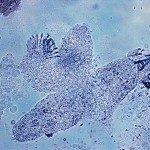About
Achievement of malaria elimination requires development of novel strategies targeting the parasite sexual stages (gametocytes) to interfer with parasite transmission. The formation of Plasmodium falciparum gametocytes in the human host takes several days in which immature gametocyte-infected erythrocytes (GIE) sequester in the bone marrow and in the spleen, and appear only as mature stages in the peripheral blood. The release and persistence in bloodstream are prerequisites for mature gametocytes to be taken up by mosquitoes and ensure parasite transmission. However, mechanisms underlying GIE sequestration and release in circulation are virtually unknown. We have recently shown that mature GIE are more deformable than immature stages, and that this switch in cellular deformability is accompanied by changes in localization of the parasite STEVOR proteins in the erythrocyte. Thus, I propose that sequestration of immature GIE is mediated by mechanical retention, that a STEVOR-mediated switch in cellular deformability is associated to release of mature GIE in the bloodstream. These processes might represent novel and unconventional targets for interference with parasite transmission. The main objectives of this proposal are to decipher mechanisms mediating gametocytes sequestration and release into the bloodstream, and to establish that these mechanisms may be new targets to block malaria parasite transmission.

